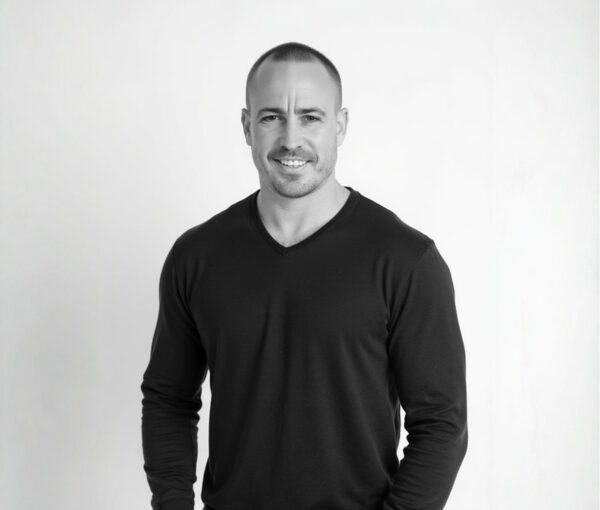A new report paints a very clear picture: Leadership isolation is real and it isn’t just a personal issue, it’s an organisational risk. By Darren Levy.
Ever feel like leadership is lonelier than it should be? You’re not alone.
From frontline leaders grappling with high stress and low support to CEOs navigating the immense pressures of steering the ship, isolation at all levels of leadership is taking a silent toll on organisations and leader wellbeing. It’s more than just a personal struggle, it’s affecting business performance, culture, and employee wellbeing.
“The higher you climb, the lonelier it gets…”
Recent insights reveal a troubling pattern: The higher you climb, the lonelier it gets, and the greater the risk to organisational success. But it doesn’t have to be this way. So, how do we break the cycle and create environments where leaders thrive, not just survive?
The CEO loneliness factor
It’s surprising, isn’t it? You’d expect CEOs to feel fully supported, given their pivotal role. Yet, Human Synergistics’ Nation’s Wellbeing Report, covering data from over 70,000 New Zealand and Australian leaders over five years, shows that only half of CEOs feel genuinely supported.
Why? Because leadership at the top is uniquely isolating. CEOs are expected to drive vision, execute strategy, and make critical decisions, all while managing increasing complexity. Yet, they often can’t openly discuss these challenges with their teams. Add to that the immense pressure to perform (and quickly), plus a culture where showing vulnerability is perceived as weakness, no wonder many CEOs feel unsupported.
How can organisations and boards address this?
- Build high-performing executive teams: CEOs need time and space to develop an aligned, growth-focused leadership team. Their first team is the executive team, not their functional team.
- Strengthen support networks: Boards should ensure CEOs have access to mentors, coaches, or peer groups. Often naming an issue tames it and it becomes much easier to navigate.
- Encourage open feedback channels: Honest, structured conversations between the CEO and board help align expectations and provide support where needed.
- Foster a culture of openness: CEOs who can be real about their struggles, without fear of judgment, set the tone for a more constructive leadership culture.
When CEOs feel stuck
Beyond isolation, the report highlights another concern… over a third of CEOs aren’t satisfied with their organisation. Misalignment between vision and reality, internal politics, and board pressures can leave CEOs feeling frustrated. They may have bold ideas, but without the right resources or support, they hit roadblocks.
“Boards should ask themselves… “When was the last time I checked in with our CEO, not on KPIs, but on their mindset, frustrations…”
How Can This Be Improved?
- Align vision with execution: Regular interactions beyond the normal cadence of board meetings are essential. Boards should ask themselves… “When was the last time I checked in with our CEO, not on KPIs, but on their mindset, frustrations, and aspirations?”
- Shape organisational culture deliberately: If culture doesn’t align with strategy, progress stalls. Boards and executives must actively review and shape culture, empowering leaders across the business to drive meaningful change.

Darren Levy.
The frontline leadership crisis
The Human Synergistics report makes it clear… leadership challenges aren’t just at the executive level. Frontline leaders (those leading the largest number of employees) report the highest stress and lowest support. This suggests a fundamental flaw in how leadership is developed early on.
Too often, individuals are promoted into leadership roles based on technical ability, but they receive little to no formal leadership training. It’s like learning to swim by reading a book (yes you actually need to get wet) yet with hands-on experience and proper coaching it makes the experience far more effective and enjoyable.
Why is leadership development lacking?
- Short-term focus: Many organisations prioritise immediate results over long-term leadership development.
- Under-investment in development: Leadership is a skill that must be taught, yet it’s often assumed people will simply ‘figure it out’.
- Cultural blind spots: In some workplaces, developing leaders is still seen as a ‘nice-to-have’ rather than an essential investment in future performance.
When CEO isolation hurts the business: Case study – breaking the silence
At one organisation, the CEO was under immense pressure but lacked a true support system. They felt they needed to fully solve critical issues in isolation before sharing them with the board chair. Over time, frustration set in on both sides, communication broke down, and trust eroded.
The fix: Through a Human Synergistics executive coach and the Lifestyles Inventory (LSI) 360 feedback process, it became clear that the CEO interacted with their executive team very differently from how they engaged with the chair. With this insight, the CEO adjusted by quickly structuring conversations with the chair around the facts, key challenges, and potential solutions instead of delaying. Over time, trust between the CEO and chair was rebuilt, leading to a far more constructive partnership.
Boards play a critical role in either easing or exacerbating CEO isolation. Those that focus solely on performance metrics without considering the human side of governance risk unintentionally negatively impacting CEOs’ performance.
How can boards be more supportive?
- Make space for real conversations: Regular discussions beyond performance reviews to check in on the CEO’s challenges and well-being. Remind leaders that the board is there to challenge and support.
- Set clear, realistic expectations: What’s feasible doesn’t always align with what’s desirable. Boards should work with CEOs to ensure goals are ambitious yet achievable with available resources and with fair timelines.
- Encourage mentorship and coaching: Many CEOs benefit from external perspectives. Boards should advocate for coaching support or mentorship networks.
- Cultivate trust: When CEOs feel they can be open without fear of backlash, they are more likely to proactively address challenges, which benefits the entire organisation.
The report paints a clear picture, leadership isolation isn’t just a personal issue, it’s an organisational risk. When CEOs and frontline leaders feel unsupported, it impacts decision-making, engagement, and performance at every level.
Breaking the cycle requires stronger support systems, proactive leadership development, and a shift toward trust-based governance. Organisations that invest in their leaders (both at the top and in the early stages) will build cultures that thrive in an increasingly complex and fast-paced world.
By focusing on connection, alignment, and leadership growth, businesses can ensure that their leaders not only survive—but thrive.
See the full report here: The Way we Work: The Nation’s Wellbeing Report Human Synergistics Workplace Trends report
Darren Levy is a senior consultant at Human Synergistics New Zealand. His facilitation style is “dynamically challenging”. He is able to be thought provoking whilst providing inspiration and practical steps for leaders and teams to create and sustain effective change. Darren has been coaching for more than 18 years from grass roots to executive and board level.











